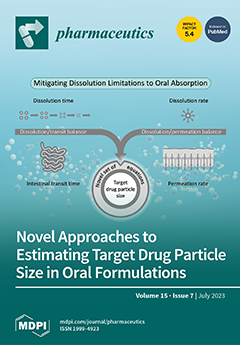The objective of this work was to investigate, for the first time, the antioxidant effect of a mixture of natural antimicrobials in an
Enterocytozoon hepatopenaei (EHP) shrimp-gut model of infection and the biological mechanisms involved in their way of action. The study approach
[...] Read more.
The objective of this work was to investigate, for the first time, the antioxidant effect of a mixture of natural antimicrobials in an
Enterocytozoon hepatopenaei (EHP) shrimp-gut model of infection and the biological mechanisms involved in their way of action. The study approach included investigations, firstly, in vitro, on shrimp-gut primary (SGP) epithelial cells and in vivo by using EHP-challenged shrimp. Our results show that exposure of EHP spores to 0.1%, 0.5%, 1%, and 2% AuraAqua (Aq) significantly reduced spore activity at all concentrations but was more pronounced after exposure to 0.5% Aq. The Aq was able to reduce EHP infection of SGP cells regardless of cells being pretreated or cocultured during infection with Aq. The survivability of SGP cells infected with EHP spores was significantly increased in both scenarios; however, a more noticeable effect was observed when the infected cells were pre-exposed to Aq. Our data show that infection of SGP cells by EHP activates the host NADPH oxidases and the release of H
2O
2 produced. When Aq was used during infection, a significant reduction in H
2O
2 was observed concomitant with a significant increase in the levels of CAT and SOD enzymes. Moreover, in the presence of 0.5% Aq, the overproduction of CAT and SOD was correlated with the inactivation of the NF-κB pathway, which, otherwise, as we show, is activated upon EHP infection of SGP cells. In a challenge test, Aq was able to significantly reduce mortality in EHP-infected shrimp and increase the levels of CAT and SOD in the gut tissue. Conclusively, these results show, for the first time, that a mixture of natural antimicrobials (Aq) can reduce the EHP-spore activity, improve the survival rates of primary gut-shrimp epithelial cells and reduce the oxidative damage caused by EHP infection. Moreover, we show that Aq was able to stop the H
2O
2 activation of the NF-κB pathway of Crustins, Penaeidins, and the lysozyme, and the CAT and SOD activity both in vitro and in a shrimp challenge test.
Full article






